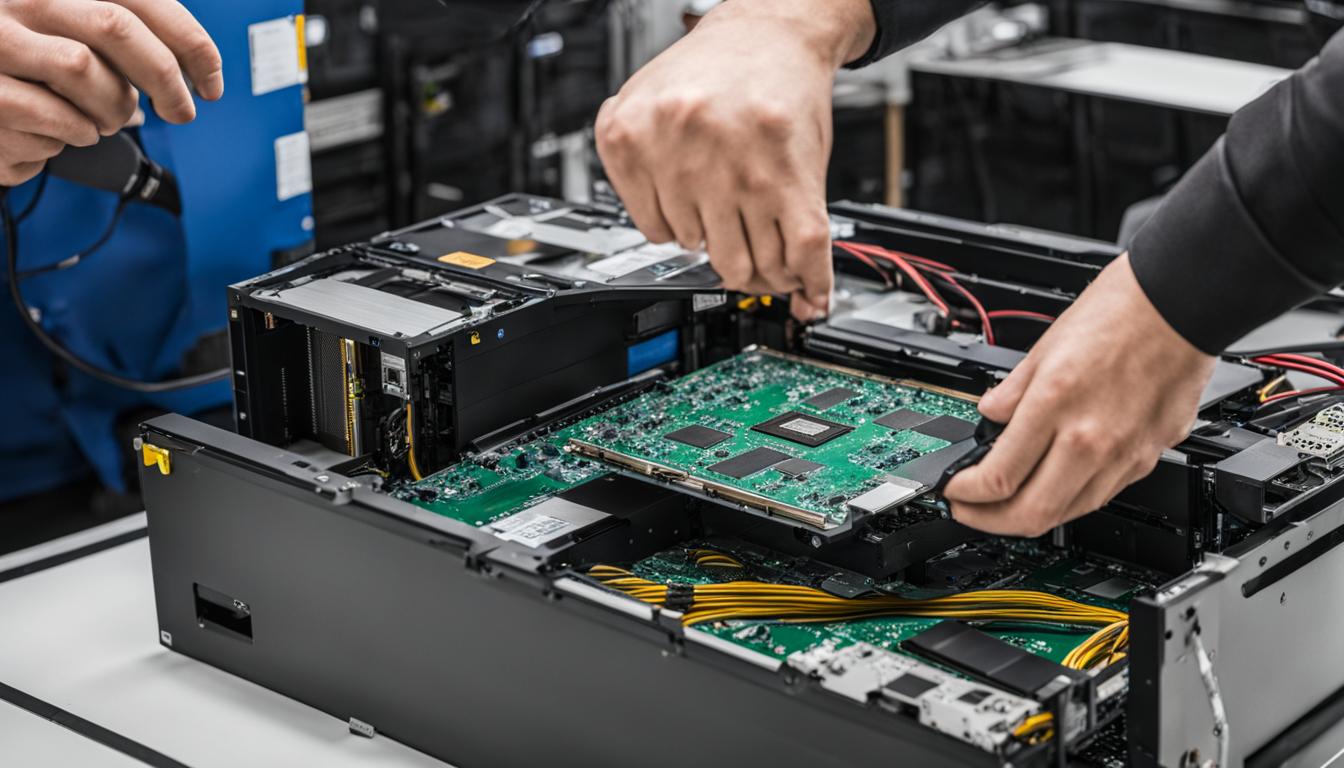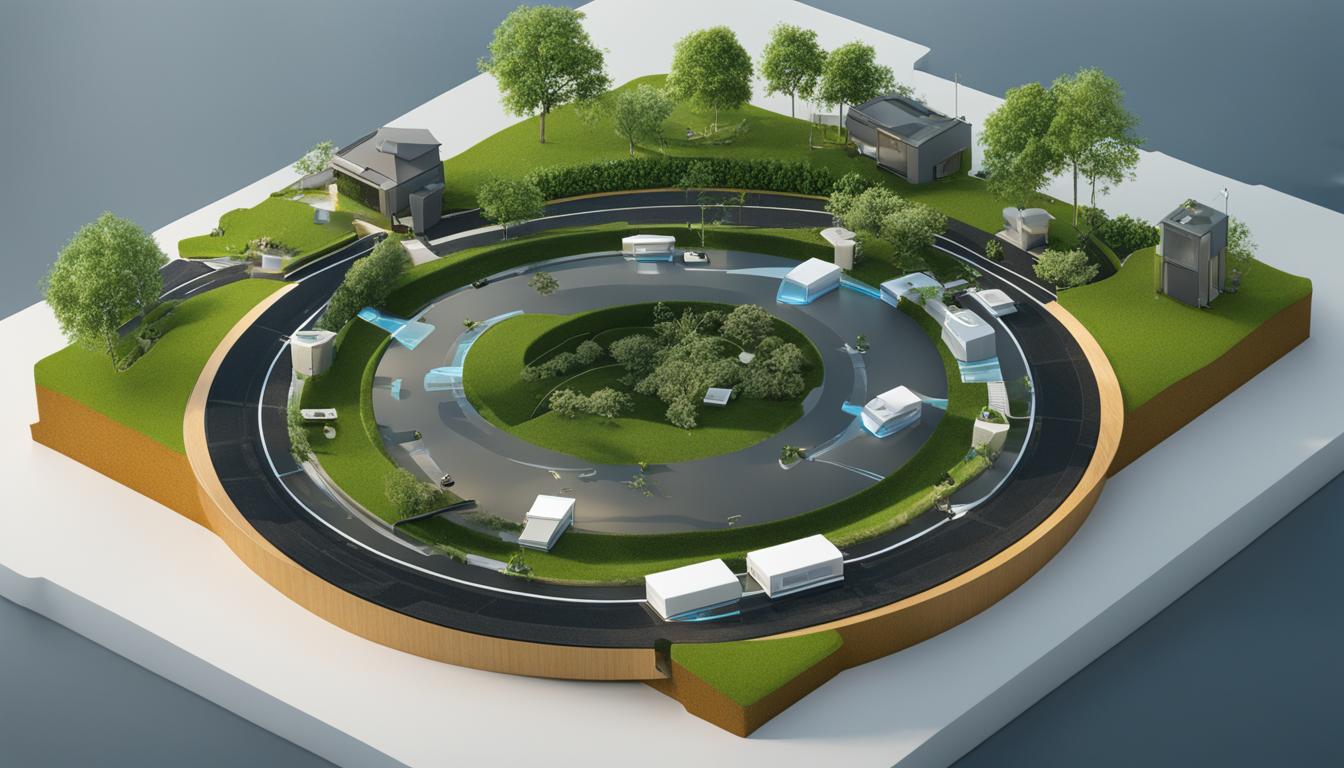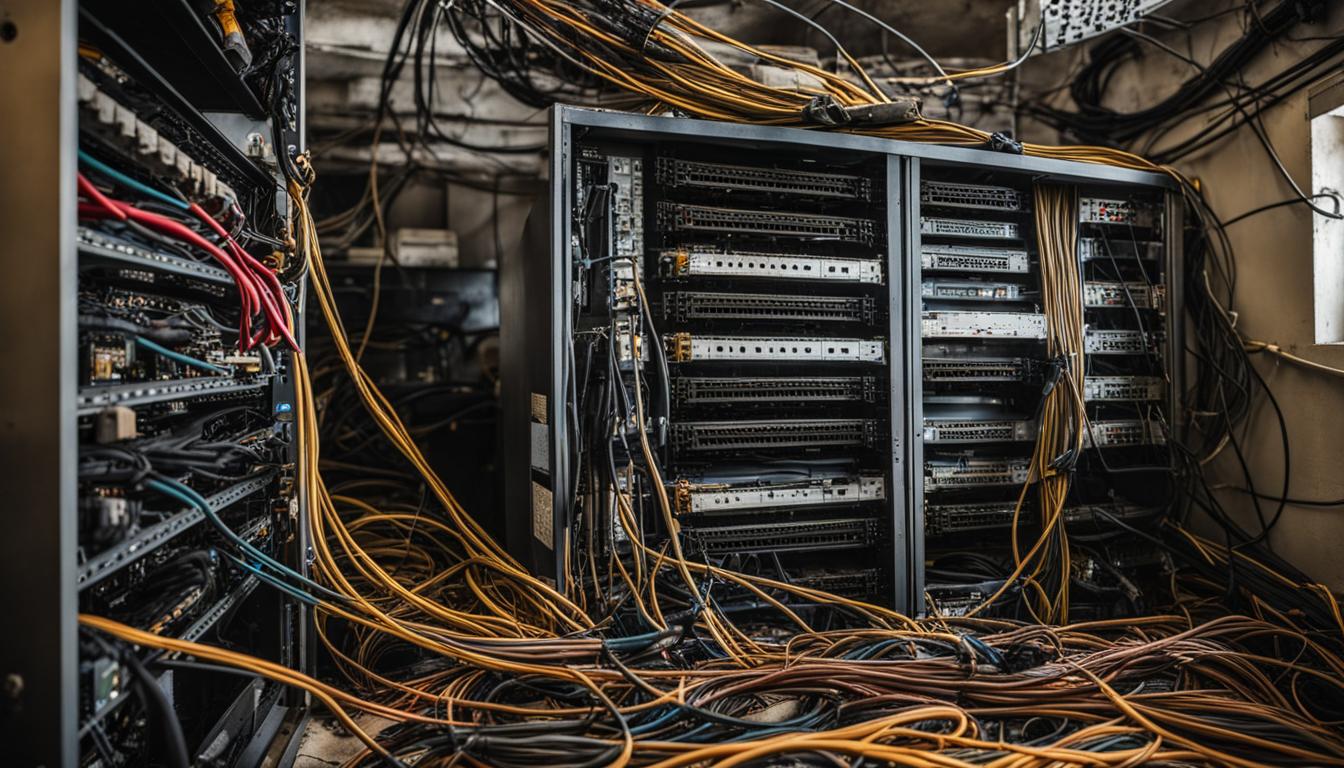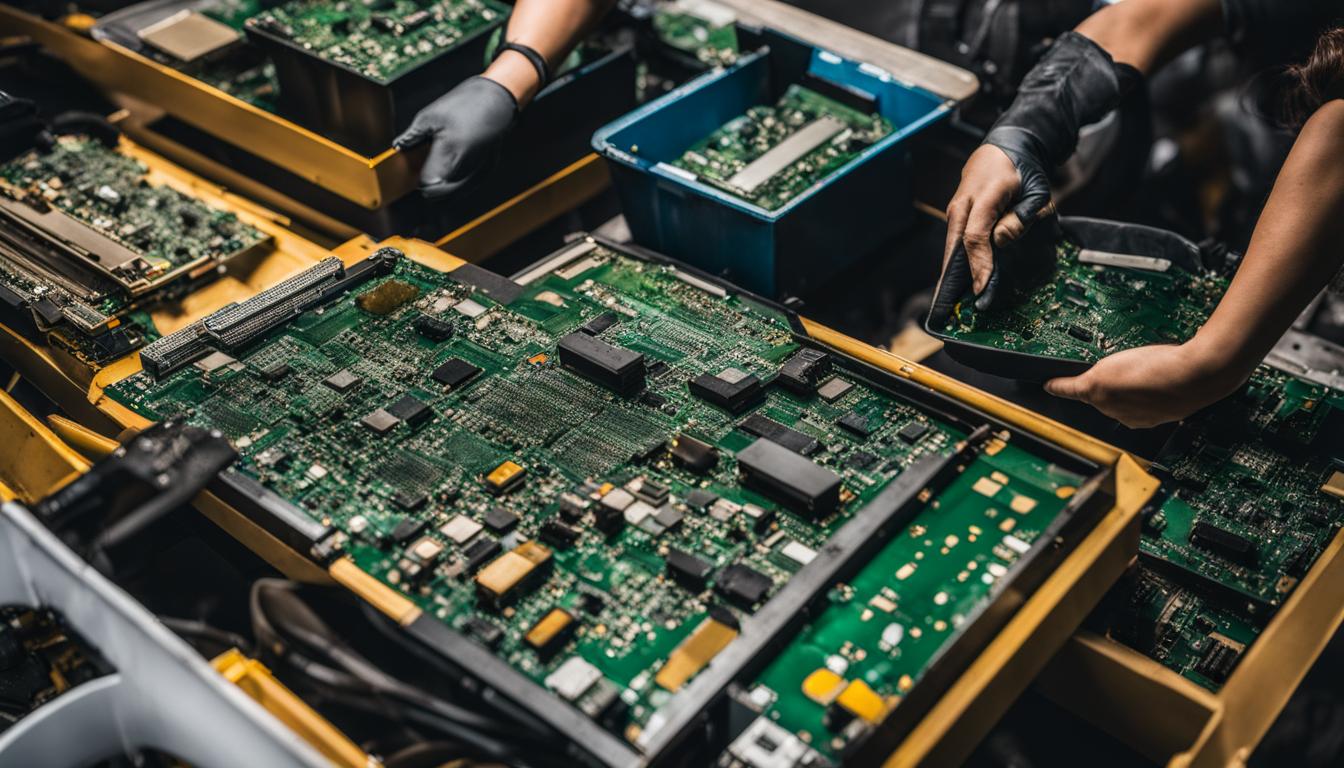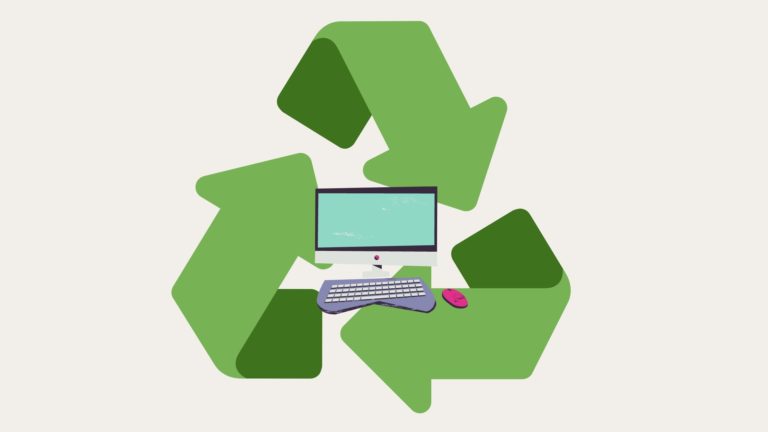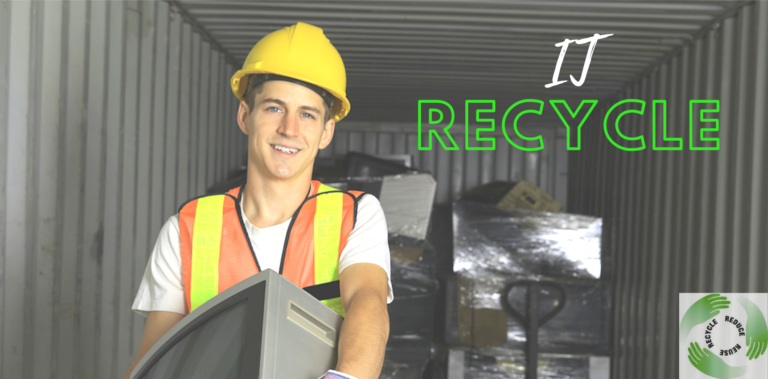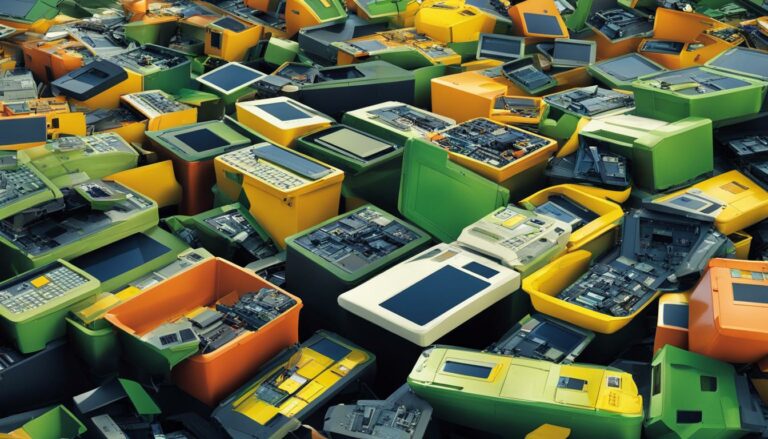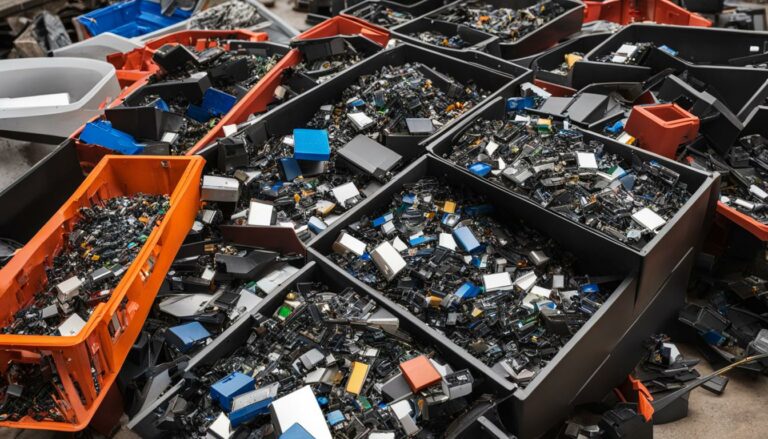Rethinking Server End-of-Life: Responsible Decommissioning
Server decommissioning is an essential process for organisations to responsibly dispose of servers and protect their data. Operators have several options when it comes to managing the end-of-life of their servers, including extending the service life, reusing parts, or recycling materials. By properly managing server decommissioning, organisations can promote sustainability and meet their corporate social responsibility.
Key Takeaways:
- Server decommissioning is crucial for sustainable IT practices.
- Operators can extend the service life, reuse components, or recycle servers.
- Partnering with manufacturers and hyperscalers enhances responsible decommissioning.
- Responsible decommissioning reduces waste and contributes to the circular economy.
Extending the Service Life of Servers
One option for managing the end-of-life of servers is to extend their service life through upgrades. Just like with aircraft upgrades, servers can have their flight hours or cycles limit extended, known as the extended service goal. This can help operators maximize the value of their servers and delay the need for decommissioning. By upgrading and reusing parts, operators can save costs and reduce waste.
Extending the service life of servers offers several benefits. Firstly, it allows organizations to continue using their existing infrastructure without the need for immediate replacement. This can result in significant cost savings, especially for businesses with large server fleets. Additionally, by extending the service life, operators can reduce the environmental impact associated with manufacturing new servers.
One example of extending the service life of servers is the use of advanced virtualization technology. By consolidating multiple servers onto a single hardware platform, organizations can optimize resource utilization and reduce the overall number of servers required. This not only extends the service life of existing servers but also helps improve energy efficiency and reduce carbon emissions.
| Benefits of Extending Service Life of Servers | Considerations |
|---|---|
| Cost savings | Compatibility with legacy systems |
| Reduced environmental impact | Availability of upgrade options |
| Improved resource utilization | Support from server manufacturers |
Upgrading and extending the service life of servers is a sustainable approach to server decommissioning. By maximizing the value of existing hardware and reducing waste, organizations can align their IT infrastructure with environmental objectives while also benefiting from cost savings.
By considering the extended service goal and exploring upgrade options, organizations can make informed decisions about server decommissioning that promote sustainability and responsible resource management.
Reusing and Recycling Server Components
When it comes to responsible server decommissioning, reusing and recycling server components offers a sustainable solution. Just as aircraft owners can source Used Serviceable Material (USM) from decommissioned aircraft, server owners can do the same with their decommissioned servers. However, it’s crucial to ensure that the used parts are safe and certified, with proper release certifications and traceability.
By reusing server components, organizations can not only reduce waste but also save costs. Just like in the aircraft industry, where reusing aircraft parts is a common practice, reusing server components can extend their lifespan and provide value to operators. It’s important to follow proper certification processes to ensure the quality and reliability of the reused components.
Moreover, recycling server components also plays a significant role in responsible decommissioning. The recycling process involves safely recovering valuable components and raw materials from servers. This process ensures compliance with regulations and safety considerations, minimizing the environmental impact of the discarded servers.
| Benefits of Reusing and Recycling Server Components | Challenges |
|---|---|
| • Reduced waste | • Ensuring proper certification |
| • Cost savings | • Traceability of components |
| • Extended component lifespan | • Safely recovering valuable components |
Reusing and recycling server components not only promotes sustainability but also contributes to a more circular economy. It’s essential for organizations to prioritize responsible decommissioning practices by considering options such as reusing and recycling server components. By doing so, they can reduce waste, save costs, and contribute to a greener IT landscape.
Responsible Server Recycling
When servers reach the end of their life, responsible recycling is crucial to minimize waste and maximize resource recovery. Just like with aircraft, server recycling involves a specialized process that promotes sustainability and ensures compliance with regulations.
During the recycling process, valuable components and raw materials are recovered from the servers. This not only reduces the environmental impact but also enables the extraction of precious resources that can be used to manufacture new servers or other electronic devices. By recycling servers, organizations contribute to a more sustainable IT industry and help create a circular economy.
“Proper server recycling is essential for reducing e-waste and conserving resources. It is important to follow established recycling processes that prioritize environmentally friendly methods and adhere to safety considerations.”
Table: Benefits of Responsible Server Recycling
| Benefit | Description |
|---|---|
| Raw Material Recovery | Recycling servers allows for the extraction of valuable raw materials, such as precious metals and rare earth elements, reducing the need for new mining and conserving natural resources. |
| Reduced Environmental Impact | By recycling servers, organizations prevent hazardous materials from polluting the environment, such as lead, mercury, and brominated flame retardants that can be found in electronic waste. |
| Energy Conservation | Recycling servers saves energy compared to the production of new equipment. The energy saved from recycling can be used to power other operations or reduce overall energy consumption. |
| Job Creation | The recycling industry creates employment opportunities in areas such as collection, dismantling, sorting, and processing of electronic waste, contributing to local economies and communities. |
By prioritizing responsible server recycling practices, organizations can make a significant impact on sustainability and contribute to building a greener future for the IT industry.
The Role of Manufacturers in Sustainable Decommissioning
Manufacturers play a crucial role in promoting sustainable decommissioning practices for servers. They have a responsibility to implement eco-design principles and improve the recyclability of their products. By focusing on eco-design, manufacturers can ensure that server components are designed to be easily disassembled and recycled at the end of their life cycle. This reduces waste and provides opportunities for upcycling and downcycling.
Eco-design principles involve considering the entire life cycle of a product, from production to disposal. Manufacturers can utilize sustainable materials, minimize the use of hazardous substances, and design products with end-of-life considerations in mind. By doing so, they contribute to a more circular economy where resources are conserved and waste is minimized.
Manufacturers should strive to create products that are not only functional and reliable but also environmentally friendly. By taking responsibility for the full life cycle of their products, manufacturers can make a significant impact on reducing electronic waste and promoting sustainable decommissioning practices.
The Importance of Recyclability
Recyclability is a key aspect of sustainable decommissioning. Manufacturers should prioritize the recyclability of server components by using materials that can be easily separated and recycled. This includes avoiding materials that are difficult or costly to recycle, such as certain types of plastics or mixed materials.
By designing components with recyclability in mind, manufacturers enable organizations to efficiently dispose of servers at the end of their life cycle. This not only promotes sustainability but also helps organizations comply with regulations related to electronic waste disposal.
Opportunities for Upcycling and Downcycling
Manufacturers can also support the upcycling and downcycling of server components. Upcycling involves transforming old or discarded components into new products of higher value or quality. Downcycling, on the other hand, involves breaking down components into raw materials for use in new products.
By creating value chains that facilitate upcycling and downcycling, manufacturers contribute to the circular economy by reducing the consumption of new resources and minimizing waste. This not only benefits the environment but also creates economic opportunities for organizations involved in the recycling and refurbishment of server components.
| Upcycling | Downcycling | |
|---|---|---|
| Definition | Transforming old components into new products of higher value or quality. | Breaking down components into raw materials for use in new products. |
| Benefits | – Reduces the consumption of new resources. | – Minimizes waste. |
| Example | Transforming old server components into decorative items. | Breaking down server components into raw materials for use in the manufacturing of new electronics. |
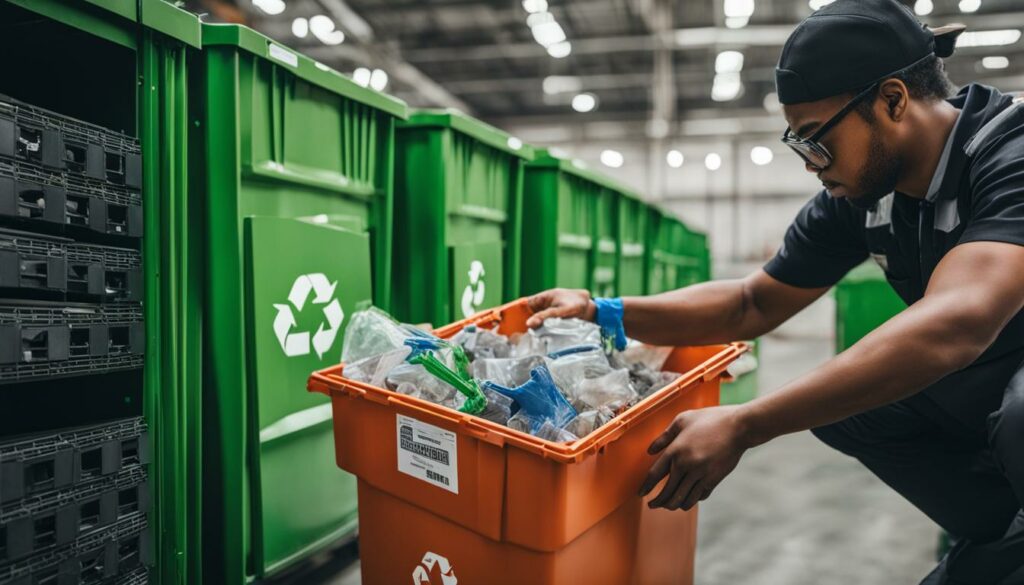
In conclusion, manufacturers have a significant role to play in driving sustainable decommissioning practices for servers. By implementing eco-design principles, prioritizing recyclability, and supporting upcycling and downcycling value chains, manufacturers contribute to the circular economy and reduce the environmental impact of their products. It is important for organizations to partner with manufacturers that prioritize sustainability and promote responsible capabilities in server decommissioning.
The Impact of Hyperscalers on Circular Practices
Hyperscale players, such as Microsoft and Google, are at the forefront of driving circular practices for server decommissioning. These industry giants, with their vast data centers and extensive server infrastructure, have recognized the importance of prioritizing the entire lifecycle of their servers. By investing in hardware re-use and refurbishment programs, they are leading the charge towards a more sustainable IT industry.
One of the key initiatives in which hyperscalers participate is the Circular Electronics Partnership. This collaborative effort aims to reduce e-waste and promote circular practices in the electronics industry. Through this partnership, Microsoft, Google, and other leading companies are working together to find innovative solutions to extend the lifespan of servers and minimize waste.
Hyperscalers understand the value of hardware re-use and refurbishment. By implementing these practices, they can maximize the value of their server investments and significantly reduce the environmental impact of their operations. Additionally, by refurbishing and reusing servers, they contribute to the circular economy by minimizing resource consumption and waste generation.
While hyperscalers are setting an example for responsible server decommissioning, their impact extends beyond their own operations. As leaders in the industry, they inspire other organizations to follow suit and adopt circular practices. By driving change and promoting sustainable decommissioning, hyperscalers play a crucial role in shaping a greener and more environmentally conscious IT landscape.
Conclusion
Responsible server retirement is crucial for organisations to promote sustainability and protect their data. By considering options such as extending the service life, reusing and recycling components, and partnering with manufacturers and hyperscalers, organisations can achieve responsible server retirement. This not only reduces waste and costs but also contributes to the circular economy and a greener IT landscape.
Server recycling plays a vital role in minimising environmental impact. Proper disposal ensures compliance with regulations and safety considerations while recovering valuable components and raw materials. By recycling servers, organisations contribute to a more sustainable environment and support the circular electronics partnership.
It’s time to rethink server end-of-life and prioritise responsible decommissioning practices. Embracing server retirement strategies such as server recycling and disposal will not only benefit organisations financially but also contribute to a greener future for the IT industry. Let us all work together towards a sustainable and responsible approach to server retirement.
FAQ
What is server decommissioning?
Server decommissioning is the process of responsibly disposing of servers to protect data and promote sustainability.
What options do organizations have for managing server end-of-life?
Organizations can extend the service life of servers through upgrades, reuse and recycle server components, and partner with manufacturers and hyperscalers.
How can extending the service life of servers benefit organizations?
Extending the service life of servers can help operators maximize the value of their servers and delay the need for decommissioning, saving costs and reducing waste.
What is the role of reusing and recycling server components in responsible decommissioning?
Reusing and recycling server components can reduce waste, save costs, and contribute to a more sustainable environment.
What is the process of server recycling?
Server recycling involves a specialized process that recovers valuable components and raw materials, ensuring compliance with regulations and safety considerations.
How do manufacturers contribute to sustainable decommissioning practices?
Manufacturers play a vital role in promoting responsible decommissioning by implementing eco-design principles, improving recyclability, and supporting upcycling and downcycling value chains.
What is the impact of hyperscalers on circular practices for server decommissioning?
Hyperscalers like Microsoft and Google lead the way in circular practices by prioritizing the whole lifecycle of servers, investing in hardware re-use and refurbishment programs, and participating in initiatives to reduce e-waste and increase circular practices.
Why is responsible server decommissioning important for organizations?
Responsible server decommissioning promotes sustainability, protects data, reduces waste and costs, and contributes to the circular economy and a greener IT landscape.
Source Links
- https://aircraft.airbus.com/en/newsroom/news/2022-11-end-of-life-reusing-recycling-rethinking
- https://www.spiceworks.com/tech/it-strategy/articles/erase-ewaste-how-to-take-charge-of-recycling-eol-products/amp/
- https://www.datacenterdynamics.com/en/analysis/re-use-refurb-recycle-circular-economy-thinking-and-data-center-it-assets/

